VladTheImpaler
Well-Known Member
Hello everyone!
Yesterday me and a buddy decided to start try our hand at all grain brewing. I've extract brewed a few times already and this was his first brew day. We brewed a 5 gallon batch of a Tropicalia clone. All in all, I think it was a success so I'll include some pictures and a rundown of the process for you guys so you can see and maybe give a few pointers if you see something.
We went out and got a 14 gal boil kettle that we drilled a thermometer and a ball valve outlet into. As well as 2 10 gal insulated Home Depot coolers that got the same spigot treatment. Along with a Blichmann Hellfire burner, wort chiller, and a couple other odds and ends.
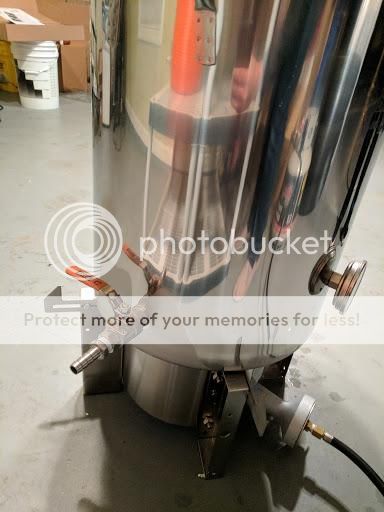


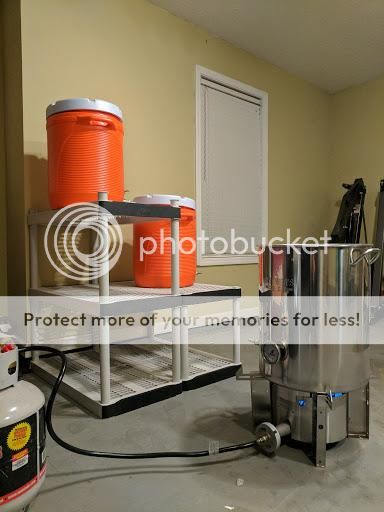
Then we heated out strike water to 170 and started the mash! The mash temp held steady at 151-152 for the whole hour. I was trying to have it be right at 150, but we weren't too far off.
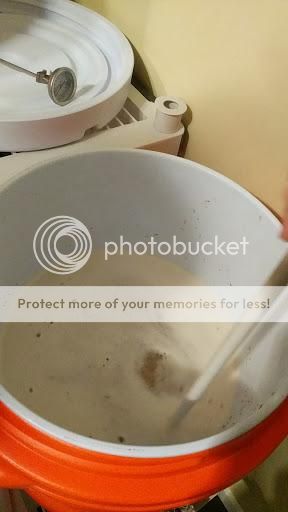
Then we fly sparged and collected 7 gallons of wort to boil and got the boil started, then cooled with the wort chiller!
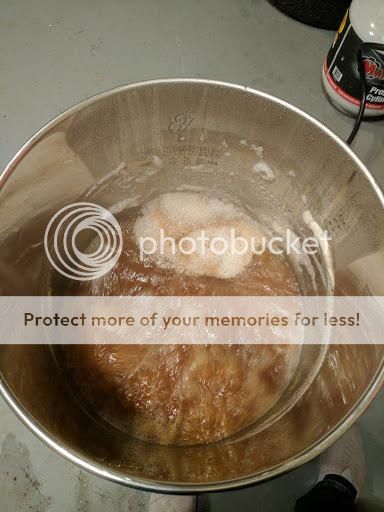
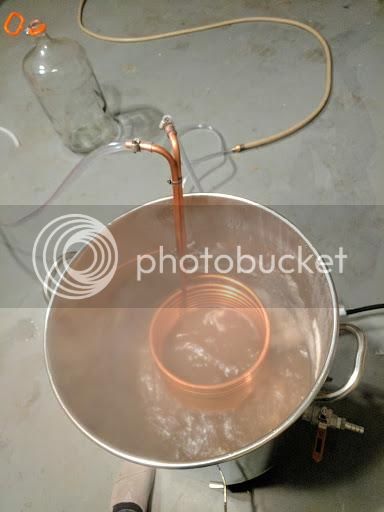
Got it all in the fermenter and pitched at 70 degrees! This morning I checked the temp and it was at 69 degrees with airlock activity already!
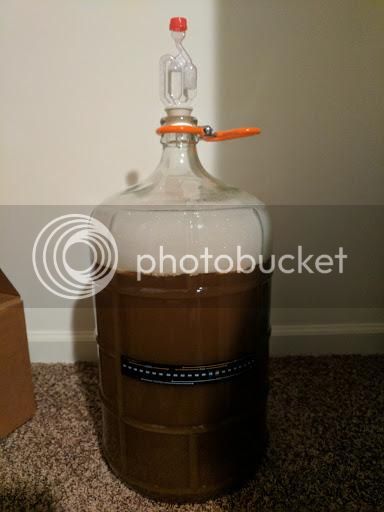
All the foam is from the star san. But all in all I would say it was a success!
I do have one question though, per the instructions for the recipe it said our OG should have been 1.066 and we clocked in at 1.054. I'm assuming we had a drop in efficiency somewhere. Maybe if we sparged slower, or collected 6.5 gallons of wart to boil as opposed to 7 it would raise our OG?
Feel free to throw in any input whatsoever! We'll be brewing again next Tuesday so it would be nice to have some tips beforehand!
Yesterday me and a buddy decided to start try our hand at all grain brewing. I've extract brewed a few times already and this was his first brew day. We brewed a 5 gallon batch of a Tropicalia clone. All in all, I think it was a success so I'll include some pictures and a rundown of the process for you guys so you can see and maybe give a few pointers if you see something.
We went out and got a 14 gal boil kettle that we drilled a thermometer and a ball valve outlet into. As well as 2 10 gal insulated Home Depot coolers that got the same spigot treatment. Along with a Blichmann Hellfire burner, wort chiller, and a couple other odds and ends.




Then we heated out strike water to 170 and started the mash! The mash temp held steady at 151-152 for the whole hour. I was trying to have it be right at 150, but we weren't too far off.

Then we fly sparged and collected 7 gallons of wort to boil and got the boil started, then cooled with the wort chiller!


Got it all in the fermenter and pitched at 70 degrees! This morning I checked the temp and it was at 69 degrees with airlock activity already!

All the foam is from the star san. But all in all I would say it was a success!
I do have one question though, per the instructions for the recipe it said our OG should have been 1.066 and we clocked in at 1.054. I'm assuming we had a drop in efficiency somewhere. Maybe if we sparged slower, or collected 6.5 gallons of wart to boil as opposed to 7 it would raise our OG?
Feel free to throw in any input whatsoever! We'll be brewing again next Tuesday so it would be nice to have some tips beforehand!



